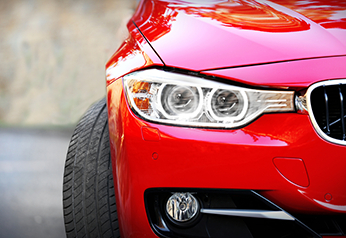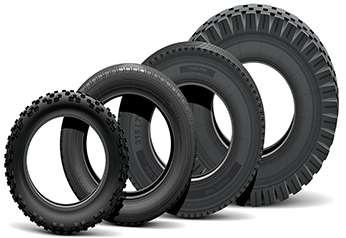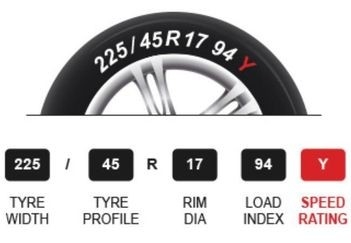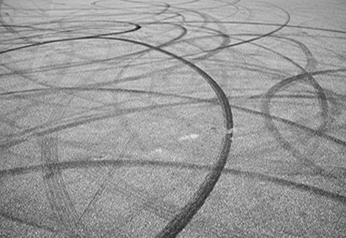
Tyre Pressure: A Complete Guide
Anyone who drives a car will know that tyre pressure is vital for the safety and performance of your vehicle. But why is it important exactly?
In this guide, we'll break down eight tyre pressure facts you need to know to ensure a safe ride every time.
1. What is tyre pressure?
Tyre pressure is how much air you have in the tyres. Every vehicle has a recommended amount of air needed per tyre. This ensures that your tyres can handle your car's load. Your tyres also need air so they can propel forward - and stop - your vehicle.
2. What PSI should my tyres be?
Tyre Pressure is measured in "psi" or pounds per square inch. Each tyre must have the correct amount of air within for it to work properly. The recommended tyre pressure of your vehicle is found in your owner's manual or on the tyre placard. While the standard is between 32-38 PSI, tyre pressure also depends on how heavy your car is, your driving style and the terrain you frequently drive on.
3. What Happens if you have Incorrect Tyre Pressure?
Having the wrong tyre pressure is highly dangerous and can comprise your car's stability, braking capabilities, lose fuel efficiency and cause tyre failure. Not only do you risk your own life, but also your passengers and other motorists and pedestrians on the road.
It will cause:
-
Tyre Deflection - When your tyre gets deformed and bulges out at its contact patch and on its sidewalls.
-
When tyre pressure is high - Too much air in your tyres causes weaker grip and traction when in contact with the road. Your car will slip, bounce, and slide and your brakes won't be as quick and responsive. This is a disaster waiting to happen, especially if you are travelling on a busy highway at high speeds.
-
When tyre pressure is too low - When you don't have enough air in your tyres, your tyre is effectively running flat, creating a bigger and misshaped contact patch. This causes increased friction and increased rolling resistance between the tyre and the road. The more friction, warm air fills the tyre, getting it too hot, lowering fuel economy, increasing CO2 emissions leading to your tyre wearing out faster.
REMEMBER: Low tyre pressure is a leading cause of blowouts since it compromises the tyres internal structure.

4. What causes the wrong tyre pressure?
Several factors can cause your tyres to either lose of gain pressure. These include:
-
Distortion
Tyre flexing, distortion and car accidents can lower a tyre's air pressure. -
Too much pressure
You put too much air in at the petrol station. -
Low tyre pressure
Small punctures, broken valves or a natural process called "permeation" (or when air leaks out naturally slowly over time) can cause your tyres to lose air. -
Climate
Seasonal changes also affect tyre pressure levels, the colder the weather, your tyre pressure drops faster. -
Overloading
Overloading your vehicle, especially heavier trucks and 4WDs also cause wrong tyre pressure
5. What are the Benefits of Correct Tyre Pressure
-
Longer lasting tyres
-
Bigger fuel savings
-
Superior overall vehicle handling
-
Prevents accidents
6. How often should you check Tyre air pressure?
You should check air pressure levels twice a month. Inspect your tyres before a long trip as well. The best time to do it is when your tyres are cold and not directly after a long drive to prevent inaccurate readings. To make it easier, schedule Routine tyre air top-ups every other time you fill up your petrol tank.
7. How do I check my tyre pressure?
If you use an electronic tyre pressure gauge, you can easily check your tyre pressure at home - or even at work. Make sure you inspect each tyre and note them down as well since some vehicles have different tyre pressure measurements for the front and back tyres. You can also visit the nearest petrol station and have their tyre technicians check for you.
8. How much air does my tyre need?
You can check the recommended correct air pressure level in your vehicle's owners manual. Recommended inflation pressure levels are also on the tyre placard located on the door panel or glove box. The placard also tells you the maximum vehicle load and the recommended tyre size.
Remember:
Having the correct tyre pressure can spell the difference between life and death in critical driving situations.
If this guide has been helpful, click our social links to share! Visit Tyroola for more tyre resources to help you out. Happy driving!



